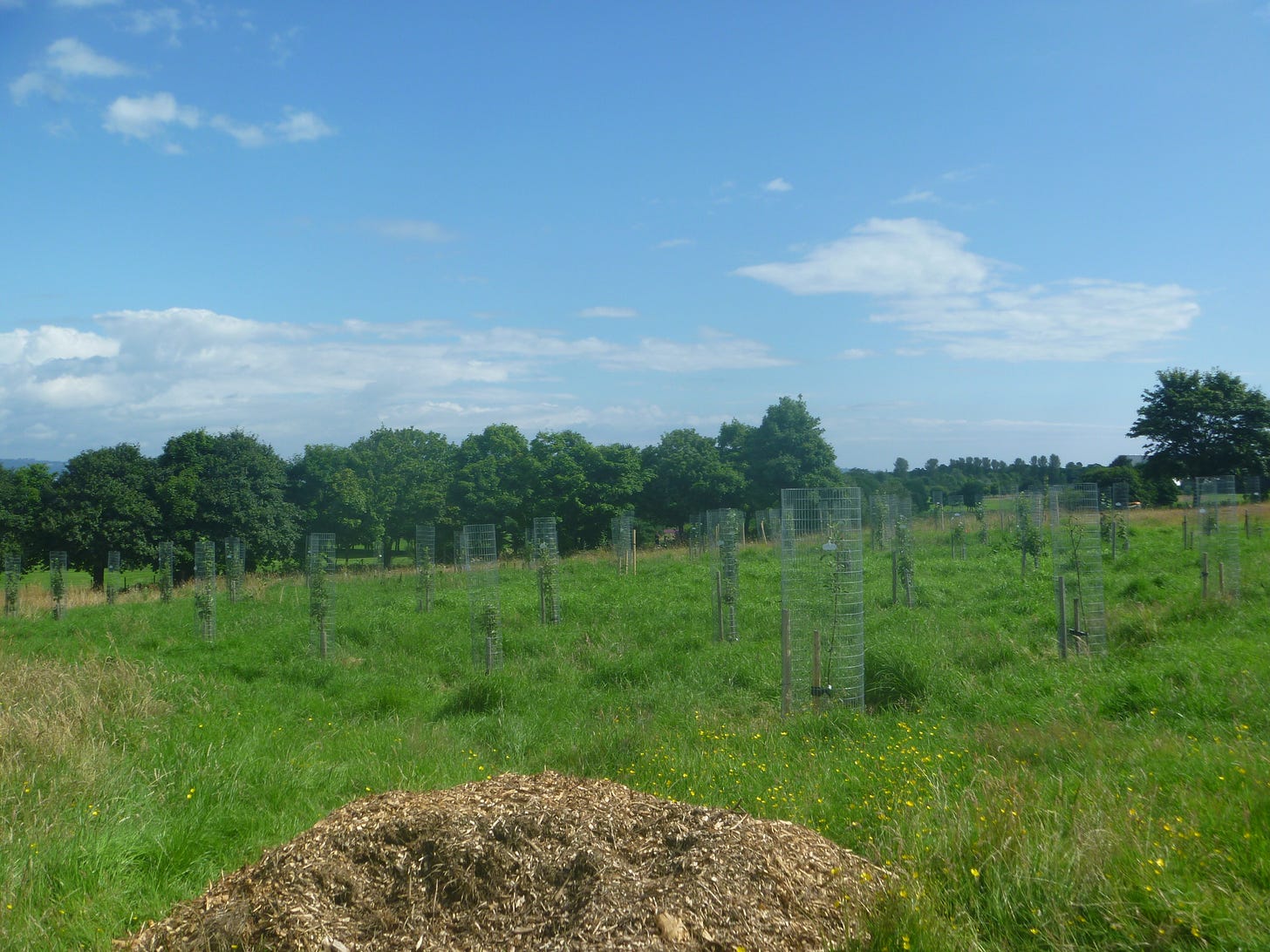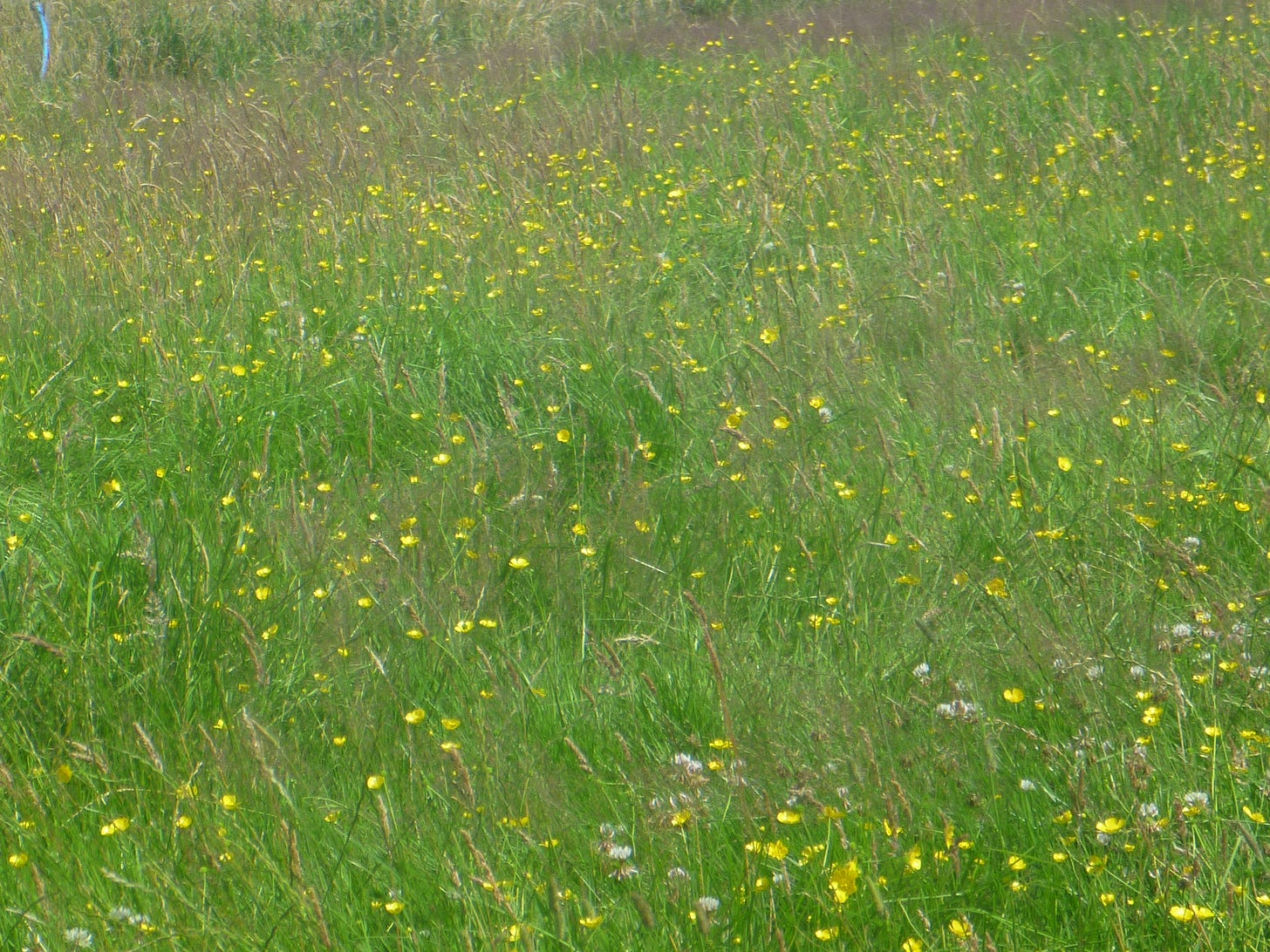A couple of weeks ago, I posted about butterfly surveying and promised to write more about the Lauriston Agro-ecology Farm, which is one of the sites where I carry out surveys.
Years ago, I used to live near Lauriston Farm and often walked past the fields down to the foreshore of the River Forth at Silverknowes. In those days, the fields were sometimes used for pasturing sheep, but often were empty. In the winter, flocks of wading birds would gather on the lower fields, mostly Curlew and Oystercatcher, but I remember when I first started walking in the area, I sometimes even saw Golden Plovers.
The farmhouse became a restaurant years ago and is now known as the Lauriston Farm Carvery.
I was very interested when Edinburgh Agro-ecology Co-operative was established in the winter of 2021. The project aims to transform the fields at Lauriston Farm into a large scale food growing farm, working on agroecological principles and involving the local community.
The co-operative has a number of strands, including:
A Market Garden, growing salad, herbs, fruit and flowers using heritage varieties and regenerative farming practices.
Trees have been planted across the farm (with more to come) including areas of native woodland and a community orchard planted with a range of varieties of fruit, mostly apples including Red Falstaff, Egremont Russet and Worcester Pearmain. In the photo below you can see the original and still thriving farm hedges behind the recently planted orchard.
Wildflower Meadows have been established in parts of the farm
while other parts have been allowed to re-wild naturally, with buttercups and White Clover being common plants
Community Growing, there are 50 community allotment plots at the farm, available for community groups, organisations and informal neighbourhood groups.
The farm is committed to supporting and conserving wildlife and in many ways is doing a great job. When I've been doing my butterfly surveys (which are in themselves part of the farm's commitment to monitoring how their work is impacting on the local wildlife) I have seen and heard: Skylarks, Reed Buntings and Linnets, which I never used to hear in the days when I used to regularly walk past the fields. There are also now far more Swallows and House Martins than there used to be. On the other hand, the farm is possibly being over-enthusiastic about their future plans for planting trees and I'm not the only person to have expressed concern that the valuable habitat for wintering waders risks being lost. The other concern for wildlife is that now that the fields are open to walkers, lots of professional dog walkers are bringing their dogs. Mostly they keep to the designated paths and mostly they tidy up after their dogs, but not all the time.
Overall, this is an inspiring project, offering people in the local community and beyond opportunities to get involved in food production and wildlife monitoring and offering nature a great chance to thrive on the edge of the city.
Good News for Nature
Polluted Lakes Are Being Cleansed Using Floating Wetlands Made of Trash.
Interesting Article
These days people are planting lots of trees to soak up carbon. But did you know that grasslands are also vital carbon sinks? Read more in this article from the UK Charity Plantlife.
Sad News for Edinburgh’s Gorgie Farm
Gorgie Farm, Edinburgh’s city farm, has been shut for a few years due to lack of funding. The path towards its re-opening has had a set back in the form of a fire which happened last week. A 14 year old has been arrested in connection with the fire. Read more about the Gorgie Farm fire on Edinburgh Live.







I really like the idea of rewilding natural areas. It's such a nice sight to see Nature gently nudges its way back into a field or path and the vibrancy of plants and wildlife restore balance.